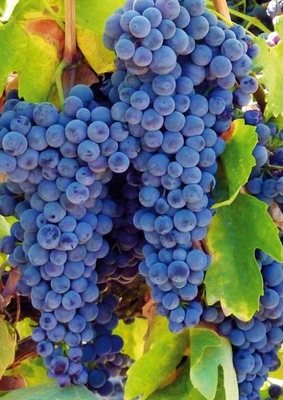Making wine out of strawberry
UvaViva Rossa is a spirit obtained by distilling “Fragola” grape (literally “strawberry” grape), a grape variety carrying an intense berries scent.
“Fragola” Grape was first imported to Europe from America in 1820 by Isabella Gibbs, and that is why this grape was also called “Isabella” grape or “American” grape according to its origins.
We distilled it for the first time in 1985 and we initially called it “Chiara di Fragola” but many clients thought it was a fruit brandy, confusing strawberries with “Fragola” grape.
This is the reason why, a few years later, we named it UvaViva Americana, but again the denomination brought our clients to misunderstand and think that the grape would come from America!
We finally decided to make it simple and call it "UvaViva Rossa", a new name for an antique spirit.
Like other varieties of the Vitis Lambrusca species it was used as a rootstock for European vines against phylloxera, being resistant to the disease that decimated the vineyards of half of Europe in the mid 19th century.
European wine producers, however, made sure it was forbidden to make wine from it for commercial purposes, fearing that the American varieties might supplant the noble Cabernet, Merlot and Pinot.
A couple of rows of uva Fragola were however planted in each vineyard of the Vicenza area and the grapes used to give a fruity and intense note to the wine produced for family consumption.
It is difficult today to find a true fragolino wine and the few farmers who make it from pure uva Fragola grapes are very careful not to sell it to the first passer-by.
The fragolino that you find in supermarkets is nothing more than red wine flavoured with strawberry juice, a nice commercial gimmick devised by a producer who was clever enough to use a name that was neither registered nor included in the ‘official’ wines list.
The first time we tried to make wine from uva Fragola we used the carbonic maceration technique in fiberglass tanks.
I got inside the tank and as Bruno Pajetta, our master cooper, threw in one box of grapes after the other, I pressed the grapes with my feet to prepare the layer that would start off fermentation and thus develop the carbon dioxide required for the remaining grapes, on top of the first layer, to ferment.
A few days later, as it seemed to me that fermentation had not started yet, I decided to go into the tank again to press the grapes better. At one point I felt my strength failing me and I just managed to say “Bruno, get me out of here”.
Luckily he was there, and he pulled me out.
I owe it to him if I can tell today how carbonic maceration works.
Jacopo Poli
Grape Brandy
UvaViva Rossa di Poli
Exuberant as a flamenco dancer.
Aromatic grape brandy, traditional bain-marie distilled.
Its aroma recalls a basket with mixed berries and ripe strawberries, chestnut honey and a couple of violets.
Find out more Watch
Watchthe video
Grappas

Distillates
Features
Raw material: Fragola grape
Production method: artisanal distillation, in small lots, with a discontinuous bain-marie still
% Alc - Content: 40% Alc./Vol - 700 ml
Service: at temperature of 10/15 °C - 50/59 °F in a tulip-shaped glass
Packaging: metal tube




